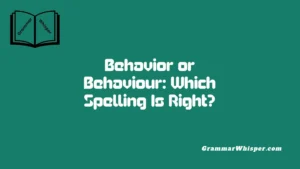ESL students often shy away from using the phrase “never + nor”. Some feel it’s too old-fashioned, while others hesitate due to uncertainty about its grammatical mechanics. But once you understand the construction, you begin to see the clarity, balance, and refined tone it brings – especially in formal, literary, or persuasive prose. Used correctly, it adds elegance and emphasis to your sentences, perfect when you’re trying to elevate the tone of your writing. For native speakers, it’s a rhythmic flourish. For learners mastering the subtleties of English nuance, it’s a surprisingly powerful tool.
Unlocking the potential of such constructions is like discovering the right place in your language toolbox. This guide goes beyond avoiding common errors – it’s about knowing when and how to use refined alternatives that suit your tone. The nuance of “never + nor” grants a sentence a gentle rhythm, a confident presence, and a classic flair. Embracing this structure can reveal new layers of meaning and smooth flow, helping your ideas shine with timeless clarity.
Why ‘Never + Nor’ Still Confuses Writers
The pairing of “never” and “nor” is deceptively simple. Yet it trips up even confident writers. Why?
- Syntax gets inverted, especially in formal sentences.
- Many confuse it with “never + or”, which is grammatically incorrect.
- It’s often replaced with modern alternatives like “not either”, “let alone”, or “not even”.
Yet when used properly, this construction provides:
- Parallelism: Clean, rhythmical balance.
- Formality: Excellent for persuasive or academic tone.
- Clarity: Helps continue a negative statement smoothly.
The Grammar Behind Negative Constructions: Never + Nor Explained
Let’s unpack it grammatically. Negative constructions in English often involve negators like “not,” “never,” “no one,” etc. These cancel or negate a statement.
- “Never” is an adverb of frequency with negative force.
- “Nor” is a coordinating conjunction used to join two negative ideas.
The rule? You cannot use “nor” unless a previous negative exists.
✅ She never smiled, nor did she speak.
❌ She smiled, nor did she speak. ← Incorrect
The Role of ‘Nor’ as a Coordinating Conjunction
“Nor” belongs to the FANBOYS family: for, and, nor, but, or, yet, so. Each joins equal grammatical elements.
| Conjunction | Function |
| And | Adds one idea to another |
| But | Shows contrast |
| Nor | Adds a negative idea to another negative |
| Or | Offers alternatives |
With “nor,” the key is continuity:
- It connects negative clauses.
- It often inverts subject and verb order, like a question.
✅ He didn’t eat dinner, nor did he have dessert.
How ‘Never’ Sets the Stage for ‘Nor’: Dependency and Logic
“Never” doesn’t just negate a verb – it sets up a logical sequence. Without this prior negative, “nor” feels awkward and incorrect.
✅ She never opened the letter, nor did she read the envelope.
In this example:
- The first clause introduces the negative with “never.”
- The second clause continues it with “nor.”
Important tip: If you use “nor” without a prior negation, it results in an incomplete or incorrect structure.
❌ She went to the market, nor did she buy anything. ← wrong unless you rewrite the first clause.
‘Nor’ vs ‘Neither… Nor’: What’s the Real Difference?
| Expression | Use Case | Example |
| Never + Nor | Continues an action-based negative | He never smiled, nor did he wave. |
| Neither + Nor | Joins two nouns or phrases | Neither John nor Mary attended. |
“Neither… nor” is a correlative pair.- Subject-verb agreement follows the noun closest to the verb.
✅ Neither the teacher nor the students were late.
✅ Neither the students nor the teacher was late.
Use “never + nor” when you’re describing actions, and “neither + nor” for noun subjects.
Comparing ‘Nor’ With Other Negative Coordinators
Sometimes, it’s hard to decide which word to use. Here’s how “nor” stacks up:
| Word | Function | Formality | Example |
| Nor | Continues negation | Formal | He never drank, nor did he smoke. |
| Or | Offers choice | Neutral | He didn’t drink or smoke. |
| But not | Adds emphasis | Casual | He drank coffee but not tea. |
When you want stylistic weight and balance, “nor” wins.
Common Sentence Patterns with ‘Never + Nor’
Pattern 1:
Never + [verb], nor + [auxiliary + subject + verb]
Example:
She never ran late, nor did she make excuses.
Pattern 2:
Never + [auxiliary + subject + verb], nor + [subject + verb]
Example:
Never had he seen such chaos, nor did he expect it.
Use these to structure formal writing with variety.
Stylistic Emphasis: How ‘Never + Nor’ Adds Rhythm and Formality
“Never + nor” is rhythmically satisfying. It creates a mirror structure. This form of syntactic parallelism is used for:
- Speeches
- Essays
- Literary narratives
“He never feared darkness, nor did he flinch at silence.” – Literary example
Use it when you want to elevate your prose without sounding archaic.
Real-Life Examples of ‘Never + Nor’ in Action
| Source | Sentence |
| Novel (Literary) | She never spoke of her pain, nor did anyone ask. |
| Political Speech | We never gave up, nor did we surrender our values. |
| News Editorial | The company never responded to questions, nor did it release a statement. |
These examples show it works across genres.
Nuances of Continuing a Negative Idea: Nor vs. Not Either
Sometimes you can say:
“I didn’t go. She didn’t either.”
Instead of:
“I didn’t go, nor did she.”
| Expression | Tone |
| Nor | Formal |
| Not either | Conversational |
Use “nor” in essays, resumes, or fiction. Use “not either” in emails, texts, or dialogue.
Common Mistakes with ‘Never + Nor’ and How to Fix Them
Mistake 1: Mixing up “or” with “nor” after “never.”
❌ She never drank, or did she dance. ✅ She never drank, nor did she dance.
Mistake 2: Using “nor” without earlier negation.
❌ He danced, nor did he sing.
Mistake 3: Incorrect subject-verb inversion.
❌ Never he has danced, nor he will. ✅ Never has he danced, nor will he.
Correct Usage in Questions, Dialogue, and Complex Sentences
- Can I begin a sentence with “nor”? Yes – but only if there’s a prior negative.
Never had I felt such loss. Nor would I ever forget it.
- In conversations, it can be dramatic:
“You never told me, nor did you intend to.”
It adds impact, tone, and gravity.
Alternatives to ‘Never + Nor’ for Clearer Communication
| Alternative | Use Case | Example |
| Not once… not even | Emphasis | Not once did he call, not even on holidays. |
| Didn’t… and didn’t | Neutral | She didn’t show up and didn’t explain. |
| Let alone | Contrast | He didn’t apologize, let alone explain. |
Each has its own mood. Choose based on your audience.
Using ‘Let Alone’, ‘Not Even’, and Other Variations
“Let alone” is best for increasing contrast:
He didn’t walk the dog, let alone clean the yard.
“Not even” emphasizes the unexpected:
He never smiled, not even at her joke.
Guidelines for ESL Learners and Non-Native Speakers
Tips for mastering “never + nor”:
- Practice inversion: nor + auxiliary + subject + verb.
- Look for negative clues: “never,” “not,” “no one.”
- Read formal writing and speeches.
- Translate from native language only after grasping English syntax.
Practice exercise:
Rewrite: “She didn’t respond. She didn’t explain.” → “She didn’t respond, nor did she explain.”
Expert Opinions on Negative Coordination
“Proper coordination enhances clarity and reader trust.” – Garner’s Modern English Usage
“Writers who understand negative balance tend to write stronger, cleaner prose.” – The Chicago Manual of Style
Use their advice to guide editing and polishing.
Final Thoughts
The phrase “never + nor” is a tool, not a trap. With it, you can build:
- Rhythmic structure
- Balanced clauses
- A sophisticated tone
Don’t let the formal feel intimidate you. Master the pattern, know the logic, and let your writing shine with control and grace.
FAQs
What’s the difference between “never or” and “never nor”?
Only “never nor” is grammatically correct.
Can I use it in modern writing?
Absolutely. Especially in essays, speeches, and headlines.
Is ‘nor’ too formal?
It’s formal, but not outdated. Use sparingly for emphasis.
Does it work without inversion?
In casual writing, maybe – but grammatically, inversion is expected.











